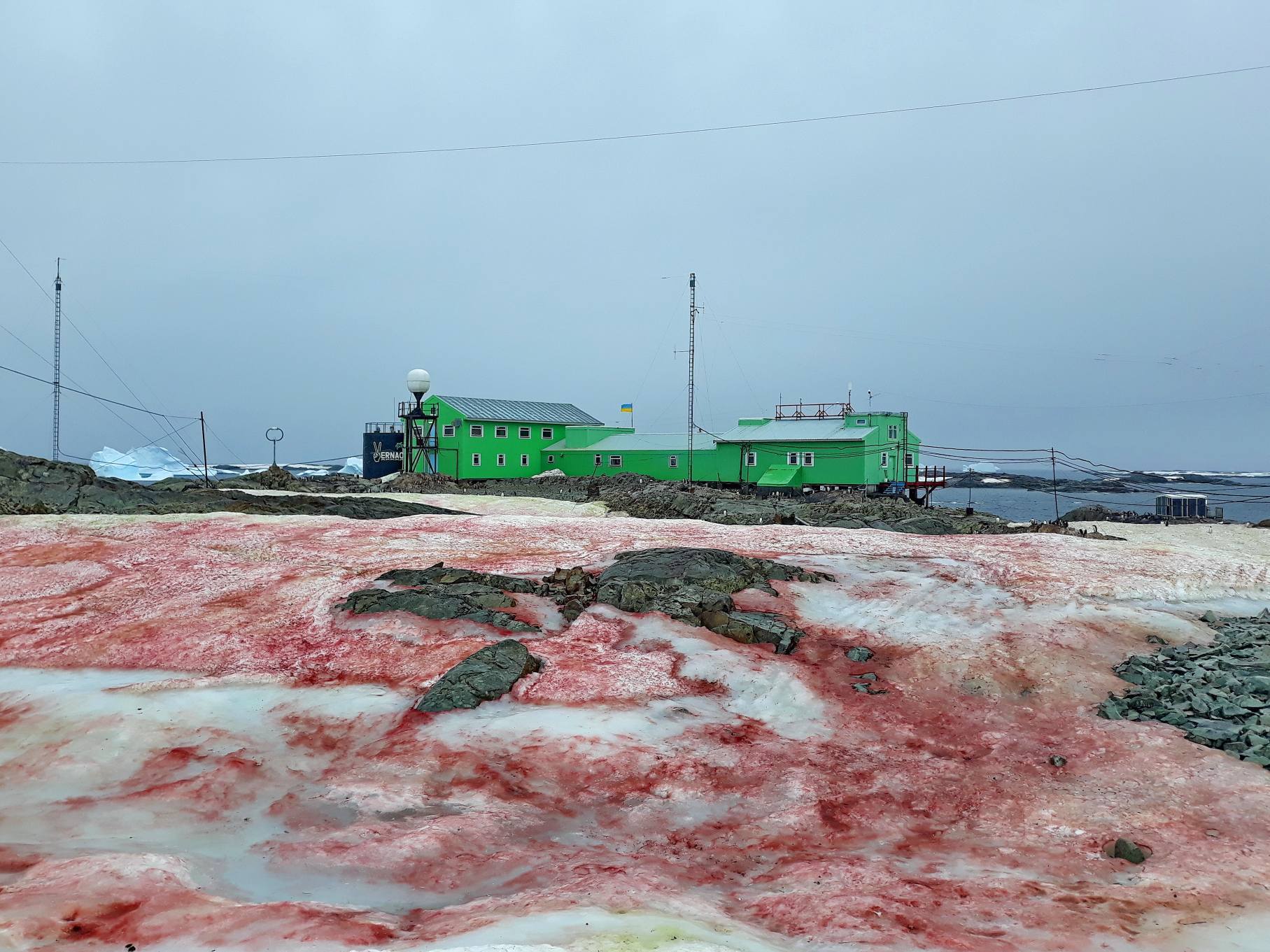
Antarctica snow turns blood-red: Bad signs of climate change visible

In a bizarre phenomenon, Ukrainian scientists got a shock when they woke up on Monday to find that the snow around their station had turned blood-red.
The red tint in the snow is caused by the microscopic Chlamydomonas nivalis algae. The carotenoids in the algae’s chloroplasts give the snow a red colour. These carotenoids are produced when this particular species of green algae receives lots of sunlight.
In a Facebook post, Ukraine’s Ministry of Science and Education posted the pictures and explained that warmer weather during the Antarctic summer prompts spores to germinate, triggering the algae to bloom which creates these weird pockets of pink watermelon snow.
The scientists also explained that this variety of Algae resides deep inside the snow layer but once the favourable condition comes, the algae make use of the meltwater and sunlight to bloom rapidly. The carotenoids help Chlamydomonas to absorb more warmth which means the snow in Antarctica will melt faster.
“Snow blossoms contribute to climate change. Because of red-raspberry colouring, snow reflects less sunlight and melts faster. As a result, it forms more bright seaweed,” they wrote.
Related news | New heat record: Antarctica at 18.3°C is warmer than Ooty
Only colder temperatures can render the algae dormant. The phenomenon is also regularly observed in the Arctic, the Alps and other mountainous regions.
Earlier this month, temperatures in Antarctica reached a new record high, reaching 18.3 °C at the Esperanza station.
(With inputs from agencies)

